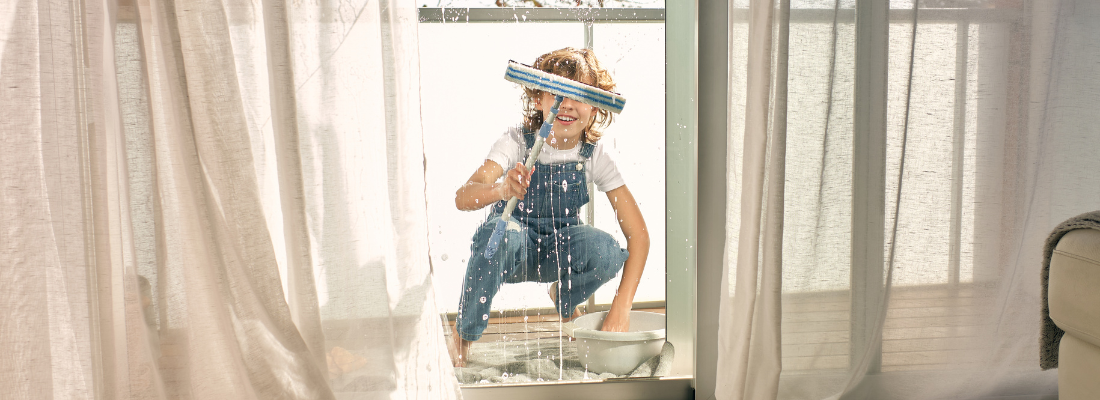5 Professional Cleaning Trends for 2022
With Interclean Amsterdam just around the corner in May of next year, we asked former director of Interclean Rob den Hertog what upcoming trends in the professional cleaning industry he foresees for 2022 and beyond.
1. Sustainability is no longer just a ‘nice to have’
Minimising damage to the environment is an increasingly important consideration in today’s professional cleaning industry. Where in the past ‘sustainability’ meant using a green product, it nowadays contains much more than that. With the UN Sustainable Development Goals and the EU Green Deal in mind, manufacturers are looking at the entire chain of production. This also includes topics such as cradle-to-cradle and circularity, sustainable packaging, and eco-labelling.
The importance of sustainability in the professional cleaning and hygiene industry has been growing for years. Now, there is no escaping it anymore. Incorporating sustainability in your business strategy likely improves trust with customers, employees and investors while protecting the environment. Sustainability is transitioning from being a ‘nice to have’ to being a ‘must have’.
2. Disinfection with UV-C technology
Ultraviolet-C can be used for a variety of purposes, including disinfection in the professional cleaning industry. Due to population growth around the world, there is an increased threat from antibiotic-resistant ‘superbugs’. Antibiotics are medicines used to prevent and treat bacterial infections. Antibiotic resistance occurs when bacteria change in response to the use of these medicines, which leads to higher medical costs, prolonged hospital stays, and increased mortality.
Ultraviolet-C, also referred to as UV-C, is the use of ultraviolet radiation with wavelengths between 200 and 290 nm. The UV-C rays are highly effective in UV sterilization and disinfection since they destroy the molecular bonds which hold together the DNA of bacteria and viruses, including the ‘superbugs’. This makes UV-C an important technology in hospitals.
UV-C cleaning is not new, it was discovered in 1896 and first used to destroy bacteria and the treatment of skin tuberculosis. Using UV-C light as a disinfectant in hospitals began from the late 1960s onward. With the current Covid19 pandemic it seems we are on the cusp of seeing UV-C become essential in the fight against infection.
3. Powered exoskeletons to improve worker wellbeing
Carrying out cleaning work is physically demanding and costs a lot of energy. It traditionally contains a lot of manual labour, most of it repetitive and putting tension on the cleaners body. This is where exoskeletons come in. The current classifications for exoskeletons are ‘active’ and ‘passive’.
Active exoskeletons are powered and work with motors and sensors. It is a wearable mobile machine that allows for limb movement with increased strength and endurance. It protects cleaning workers by providing back support, sensing the user’s motion and sending a signal to the motors which manage the gears. This releases the tension on the body and assists movement. With increased attention for worker wellbeing from employers and legislation from government the market for powered exoskeletons is likely to grow substantially in the coming decade.
4. Steam cleaning for disinfection
The challenge for hospital teams is making sure they can prevent heathcare-associated infections from occurring and spreading in the hospital. They have to destroy the micro-organisms that cause infections and deny them an environment in which they thrive. This means using sterilisation to make equipment and surfaces safe to use. One innovation to do so is steam cleaning.
Steam cleaning is an appliance that uses only a small amount of clean water, heated in a boiler. It allows for sanitizing, cleaning and deodorising any surface, without the need to use detergents. Some advantages of steam cleaning are: it saves time and money, it helps fight against anti-microbial resistance and it is environmentally friendly. Due to the Covid19 pandemic steam cleaning gained a new impulse and is likely to remain important in 2022.
5. Battery powered equipment
The volume of battery powered devices in the professional cleaning industry is increasing rapidly. Batteries can be used to improve run time, sustainability and autonomous capabilities of cleaning machines. In the recent years the energy density of batteries increased, lowering the weight and size and improving the durability of batteries. This is particularly important when battery powered cleaning equipment is being used to clean large areas, such as airports, hospitals, retail properties, office buildings, schools and industrial plants.
Battery technologies on the market includes Solid State batteries, Traction batteries, Gel Maintenance Free batteries and Lithium-ion batteries. It is expected that the Solid State battery technology will become a game changer in the years to come. This battery allows manufacturers to introduce smaller and lighter solutions that can operate longer.
Interclean Amsterdam 2022 will show many of the above mentioned trends to the visitors. For those involved in professional cleaning and hygiene a great moment to see what it can do for your company!
Receive industry news in your inbox
The cleaning and hygiene industry is on the move and the Interclean newsletter will inform you about what is happening in the industry on a monthly basis.
Share your stories with us!
Do you have an innovation or interesting news you would like to share with the professional cleaning and hygiene industry? The Interclean website and social media channels are a great platform to showcase your stories!
Please contact our press department interclean@rai.nl.
Are you an Interclean exhibitor?
Make sure you add your latest press releases to your Company Profile in the Exhibitor Portal for free exposure.
Receive the best newsletter on cleaning & hygiene - straight to your inbox!
We promise never to send you spam and you can unsubscribe at any time!





